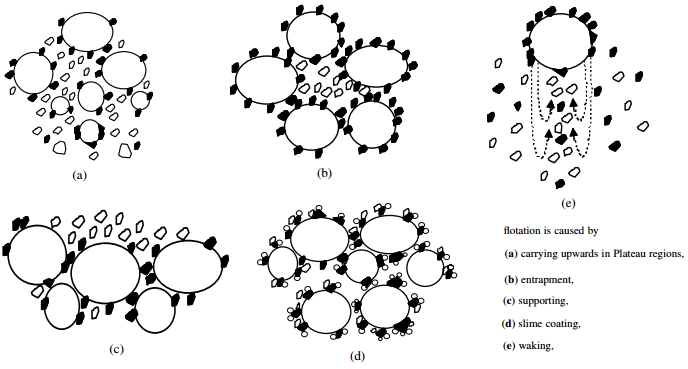Commonly, none sulphide particles like MgO, being an oxide (or silica gangue), does not respond to flotation. For example, when MgO is found in a sulfide flotation concentrate it is either for it is associated/locked with another sulfide (pyrite/sphalerite) which has and did respond to flotation, or it has been entrained into the froth along with sulfide.
Flotation via sulfide collector is easily understood, entrainment however, it often misunderstood.
Experimentally it has been found that entrainment is a strong function of particle size, as well as being dependent on other cell operating parameters such as froth depth, froth stability, froth drainage and air rate.
The of Flotation Entrainment or Froth Entrainment is phenomenon related to how bubbles carry water
The imagery below expresses the various ways ultra-fine ‘not collected’ particles, represented in white, and are entrained into froth.
Ultra-fine MgO in the concentrate can be reduced by improving froth drainage. This is done via improved dilution cleaning, the judicious use of reagents and often increasing cleaner capacity.

